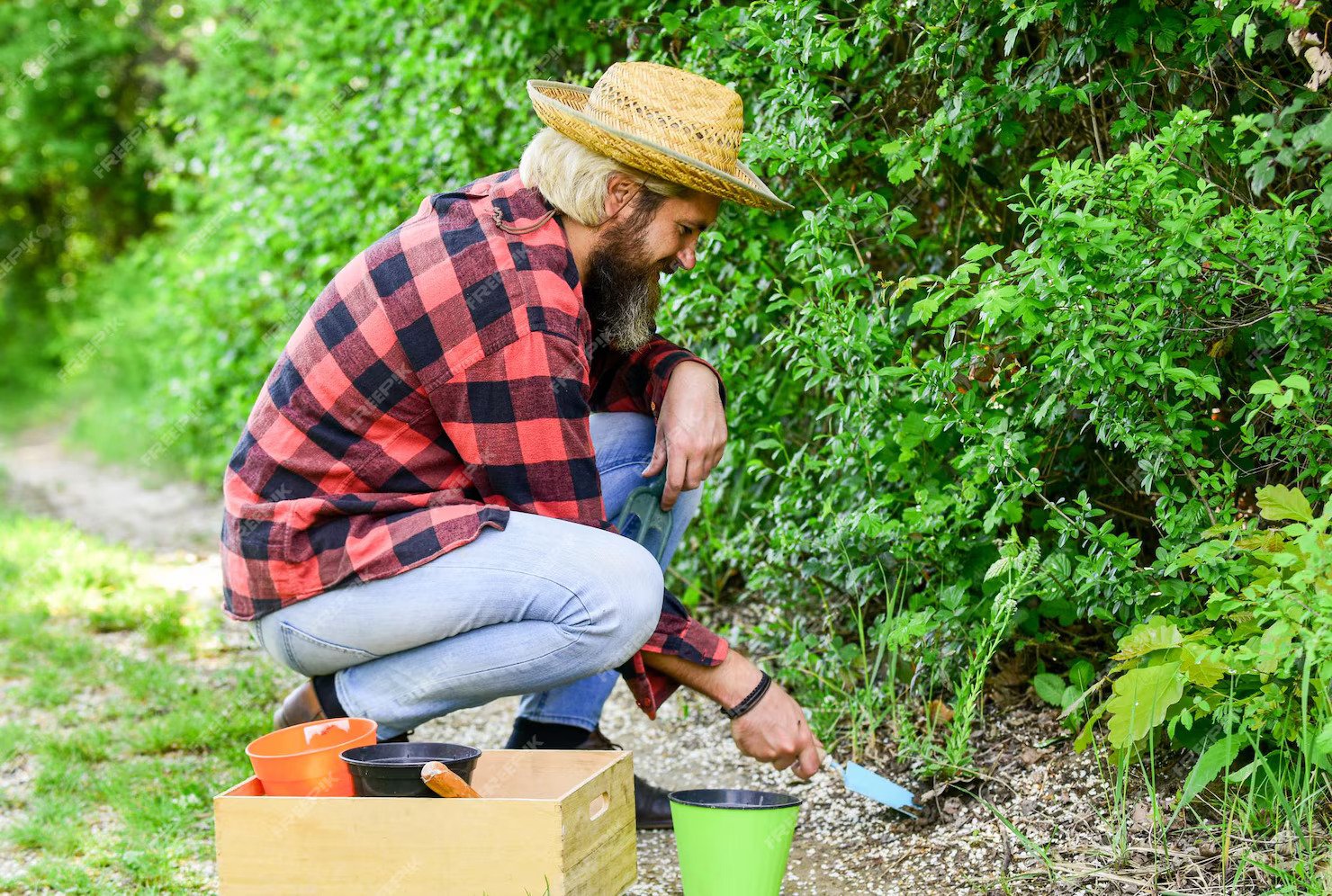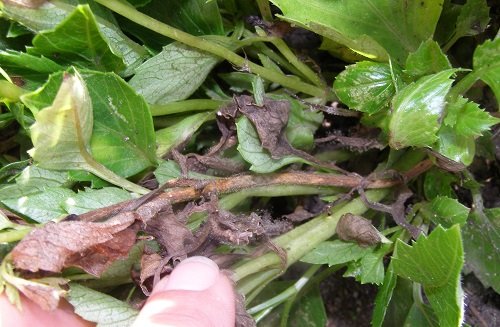Here are the most common Problems with Salvias and their solutions that will help you to keep it blooming all year round!
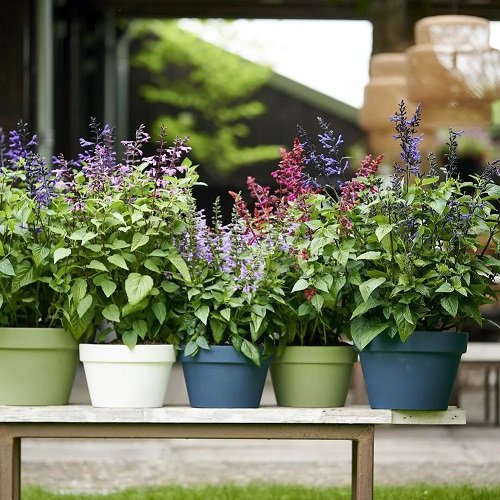
Salvias are hardy plants that can be a gorgeous addition to any garden, but they sometimes can face issues. Find out the Problems with Salvias and prevent them so the plant has healthy vital growth.
Look at the Best Types of Salvias
Salvia Plant Information

Also known as sage, salvias are a favored choice for gardening due to their prolonged flowering period and their ability to thrive in hot and arid conditions. They offer an extensive range of delightful scents, colorful blooms, varying plant structures, and hues.
These plants feature vividly colored flowers on square-shaped stems and often have fragrant leaves. Moreover, one of the significant benefits of cultivating salvias is their ability to attract hummingbirds, butterflies, and other pollinators. Additionally, due to their strong-scented foliage, salvias are resistant to deer and rabbits.
The genus Salvia displays a diverse array of shapes and growth patterns, but typically, most species grow quickly. Some species can reach a height of 5 to 6 feet in just one growing season, while others are low-growing and can be utilized as border plants. Depending on the specific type of salvia, their width can range from 12 inches to 4 feet.
Despite being a relatively resilient plant, Salvia is not entirely immune to occasional issues. It is essential to understand how to prevent and manage these problems.
Problems with Salvias

1. White Powdery Leaves
Powdery mildew is one of the most common problems with Salvias, particularly in humid climates or during rainy periods. This condition arises when plant leaves remain excessively damp and cannot dry out, leading to the growth of a grayish powdery substance on the upper surfaces of leaves.
Downy mildew, a closely related fungus, can also cause leaves to appear white and powdery. It is caused by the same conditions, but the affected areas are typically the underside of the leaves.
Solution: Both downy mildew and powdery mildew can be treated using similar methods. Avoid watering the leaves and water at the base to keep the leaves dry. You can also promote better air circulation around the plant by pruning it back. If the powdery mildew is already present, a fungicide can help eliminate it.
2. No or Faded Flowers
Salvia typically starts flowering in late spring and continues through fall. A lack of flowers on the plant is often an indication of insufficient sunlight. To ensure consistent blooming, it is essential to plant salvias in an area that receives full sun, about 5-6 hours a day.
Also, do ensure that you are Deadheading Salvias.
Insufficient watering can also cause your salvia not to produce flowers. It is advisable to check the soil after watering to ensure it is not dry. If it’s still dry, you may need to water it more. Another reason for the lack of flowering may be due to insufficient nutrients.
Applying a balanced fertilizer to your plant every two weeks can promote blooming.
Solution: Deadheading salvias can also stimulate the growth of new blooms. Removing the old and spent flowers not only keeps the plant looking neat but also encourages its growth.
3. Wilted Leaves
Heat stress can cause leaves to droop, while overwatering can also cause the same effect.
However, it is not advisable to water plants excessively to alleviate heat stress, as this can do more harm than good. Instead, watering once a day, preferably in the morning, is usually sufficient, even on the hottest days.
Solution: It is also essential to adjust your watering schedule based on your climate and observations. If the soil is too dry, Salvia may wilt, especially during the warmer months. This indicates the need to increase your watering frequency.
4. Floppy Plants and Stems
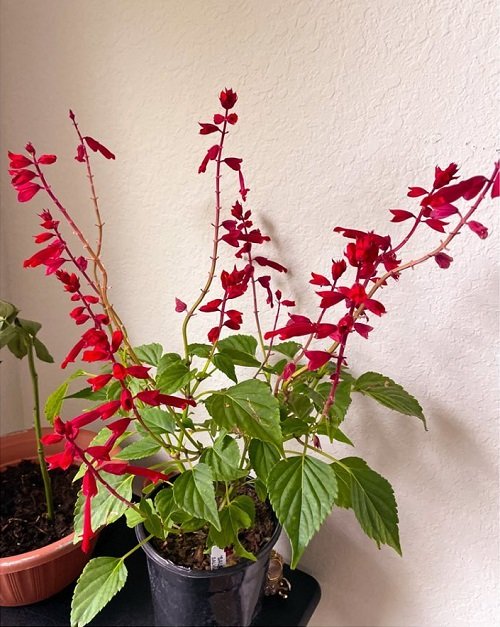
When Salvia plants are exposed to excessive rainfall or insufficient sunlight, they can become droopy or floppy.
When plants become waterlogged due to constant rain, their roots may become compressed and deprived of oxygen. The weight of the water can cause the stems and leaves to droop.
Solution: If this happens, you should pause watering your plants for a while and provide extra support by staking or caging them until they recover.
5. Leggy Plants
One common problem with Salvias is due to inconsistent watering. It’s important to establish a regular watering routine and avoid letting the plant go for long periods of time without water. Although Salvia is drought-tolerant, it still needs adequate hydration.
Another common cause of leggy growth is the lack of sunlight. Salvia requires full sun to grow properly, and if it’s planted in a shaded area, the stems and leaves can stretch out in an attempt to reach more sunlight.
Solution: If your Salvia plant is leggy, consider transplanting it to a sunnier location. Keep in mind that it may take some time for the plant to adjust to the new location, but with proper care, new growth should appear less leggy and more compact.
6. Yellowing of Leaves
When the leaves of a Salvia plant turn yellow, it could indicate either overwatering or underwatering. To determine these problems, check the condition of the leaves and the soil.
If the plant is overwatered, the bottom leaves will likely turn yellow, and the new growth may become weak and fall off. If the plant is underwatered, all the leaves will turn yellow or brown, and the plant will appear wilted.
Solution: To address overwatering, refrain from watering the plant for a period of time. If the soil still seems waterlogged, add organic matter like compost to the soil to improve oxygen flow to the roots.
For handling underwatering, water the plant thoroughly and then continue to water it regularly, possibly increasing the frequency depending on soil and climate conditions.
7. Not Coming Back After Winter
If you are growing Salvia in a zone between 4-10, depending on the specific variety, it should be a perennial plant. However, if you are experiencing difficulty in getting your Salvia to survive the winter season, there might be several reasons for it.
- Time of Year: It’s recommended to plant Salvia in the spring as it provides the plant with ample time to establish itself before the winter season. During the cooler spring temperatures, the roots and plant can gradually adjust to the new environment. Although fall planting is possible, it’s important to be vigilant about watering to allow the roots to establish themselves properly.
- Variety: It’s important to note that different Salvia varieties have varying hardiness levels. Before planting or growing from seed, make sure to check the specific variety’s recommended hardiness zone.
- Transplant Shock: Before planting, it’s important to acclimate plants to the local climate. If the plants were grown in a greenhouse without proper hardening, their root systems might be shocked during transplanting.
- Location: The proper location of your plant can play a crucial role in its ability to survive the winter. Adequate sunlight and appropriate soil conditions will aid the plant in establishing strong roots and becoming acclimated to its surroundings. A well-adapted plant to its environment will be less vulnerable to winter damage.
8. Stems Turning Brown
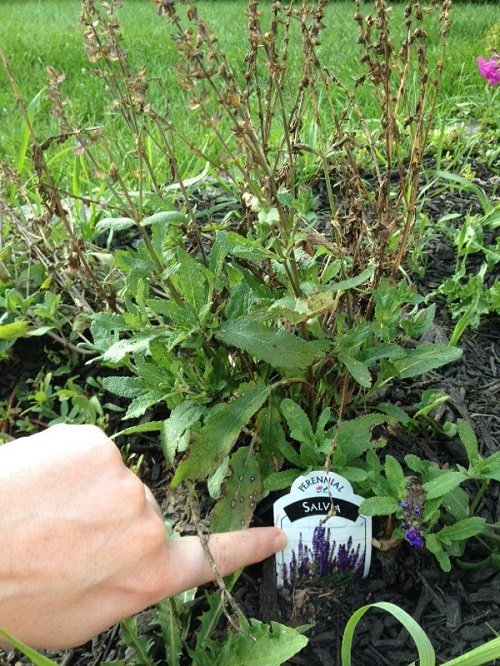
When plants are overwatered, the stems and leaves can start to turn brown due to the rotting caused by too much moisture. If left unaddressed, the brown discoloration can spread to the leaves as well. To prevent this problem, make sure to give your soil enough time to dry out between waterings.
On the other hand, if a plant is not getting enough water, the stems and leaves may turn light brown and become brittle. This is often due to severe drought, and wilting may occur before any discoloration appears.
Solution: In this case, remove any damaged foliage and adjust your watering schedule accordingly.
9. Gray or White Mold
Mold can form in moist environments, including in the plant world. When plants are kept too wet and lack good air circulation, they may develop fuzzy gray mold, which typically appears on their lower stems or older leaves.
Solution: To prevent the mold from spreading, it is important to remove the affected parts of the plant. After removing the damaged tissue, it is advisable to refrain from watering for a few days, allowing the soil and leaves to dry out if possible.
A type of fungus typically causes gray mold, often Botrytis. In the event that a fungicide application is necessary, it can be used to treat the mold.
10. Brown Leaf Tips
The browning of leaf tips often indicates inconsistent watering or transplant shock. Young plants could experience transplant shock if they were not properly acclimated to their new environment. This can result in leaves turning brown and falling off.
Solution: However, with proper watering, most plants will recover from transplant shock and return to normal growth within a few weeks. Salvia, in particular, is a resilient plant that can bounce back quickly when given the right conditions.
Another possible cause of browning leaf tips is sun scorch. When plants are not used to the full sun or are adapted to shady areas, exposure to direct sunlight can burn the leaves and cause them to turn brown and crisp.
11. Pests
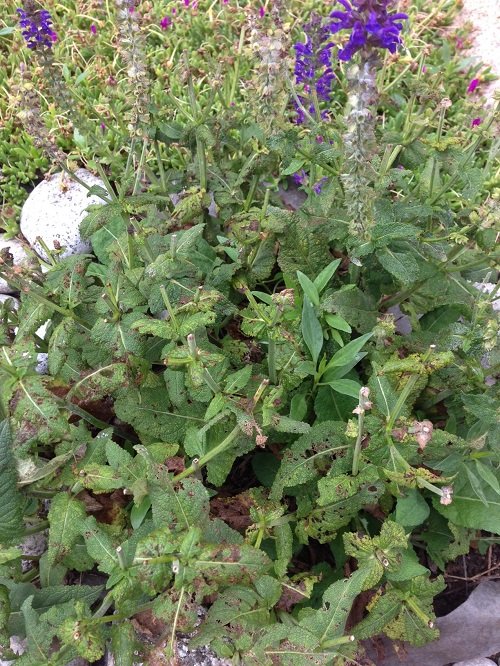
- Japanese Beetles: Although not typically a common threat to Salvia, Japanese beetles may occasionally appear, particularly during June or mid-summer months. These beetles feed on the plant’s foliage, which can damage its appearance. It’s important to remove the insects as soon as possible, and if they continue to persist, a spray treatment may be required.
- Garden Aphids: These tiny and troublesome insects can be difficult to detect at times. They are typically small, round, and green, but their color can vary depending on their life cycle stage, with some being larger and white. Early-stage infestations can often be controlled by simply spraying the affected plant parts with a garden hose, but more severe cases may require the use of an insecticide.
- Caterpillars: During late summer, a few types of caterpillars may strip the foliage from Salvia. They usually begin feeding on new growth and can cause significant damage to the plant by eating all the way down to the stems. It’s advisable to remove these caterpillars by hand to prevent them from causing further harm. However, if you wish to increase your plants’ protection, there are various home remedies and sprays that can be used.
Find Everything About Growing Salvias in Pots

